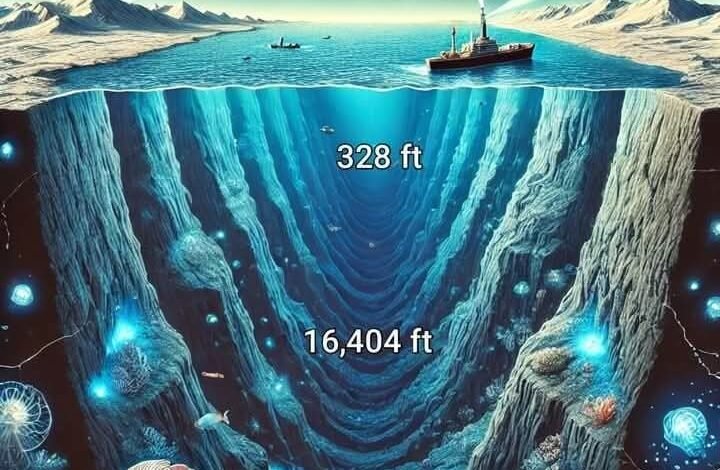The Mariana Trench: Earth’s Deepest Point

The Mariana Trench is the deepest natural point on Earth, located in the western Pacific Ocean, near the Mariana Islands and east of the Philippines. Known for its extreme depths and unique ecological environment, the trench is a geological wonder that has fascinated scientists and explorers for centuries.
Location and Dimensions
The trench lies approximately 200 kilometers east of Guam and stretches over 2,550 kilometers in length, with a width of about 69 kilometers. Its crescent shape and immense size make it one of the most striking underwater formations in the world. The trench’s deepest point, Challenger Deep, plunges approximately 10,925 meters (35,843 feet) below sea level, making it the lowest known point on Earth.
Formation and Geology
The Mariana Trench was formed through the process of subduction, where the Pacific Plate is forced beneath the smaller Mariana Plate. This geological activity occurs along the Pacific Ring of Fire, a region known for frequent earthquakes and volcanic eruptions. The Pacific crust involved in this formation is approximately 180 million years old, making it some of the oldest oceanic crust on Earth.
Extreme Environmental Conditions
The trench’s unique conditions include:
- Immense Pressure: At its deepest point, the water pressure is over 1,000 times the atmospheric pressure at sea level.
- Low Temperatures: The temperature ranges between 1 to 4 degrees Celsius, creating a cold and harsh environment.
- Complete Darkness: Due to its depth, sunlight does not penetrate, leaving the trench in perpetual darkness.
Ecological Significance
Despite these extreme conditions, the Mariana Trench is home to a variety of specialized marine life. These include:
- Microorganisms adapted to high pressure.
- Unique fish species, such as snailfish, that survive in complete darkness.
- Vents releasing liquid sulfur and methane, supporting unique ecosystems.
The trench also features active mud volcanoes and hydrothermal vents, which release carbon dioxide and liquid sulfur, creating habitats for extremophiles (organisms that thrive in extreme environments).
Exploration History
Few humans have explored the depths of the Mariana Trench due to its challenging conditions. Significant expeditions include:
- 1960: Jacques Piccard and Don Walsh made the first successful descent to Challenger Deep aboard the bathyscaphe Trieste.
- 2012: Filmmaker James Cameron completed a historic solo dive to the trench, spending hours studying its environment.
Scientific Importance
The Mariana Trench provides valuable insights into:
- Plate tectonics and the geological processes shaping Earth’s crust.
- The adaptability of life in extreme environments, offering clues about potential extraterrestrial life.
- Deep-sea ecosystems, which remain largely unexplored.
Fun Fact
If Mount Everest, the tallest mountain on Earth, were placed at the bottom of Challenger Deep, its peak would still be submerged by approximately 2 kilometers of water!
The Mariana Trench is not just a geological marvel but also a symbol of Earth’s unexplored wonders. Its extreme environment, unique ecosystems, and scientific significance make it one of the most intriguing places on the planet. As technology advances, future explorations may uncover even more secrets hidden within its depths.




